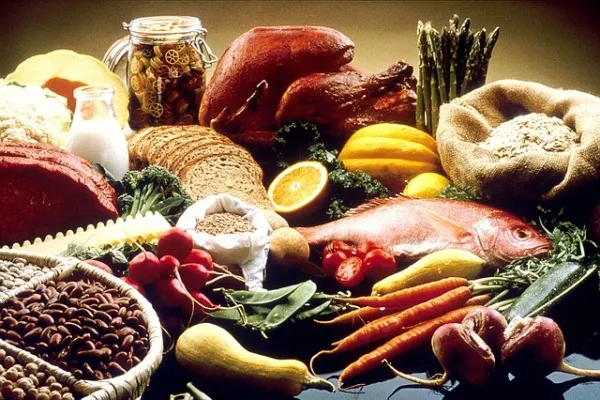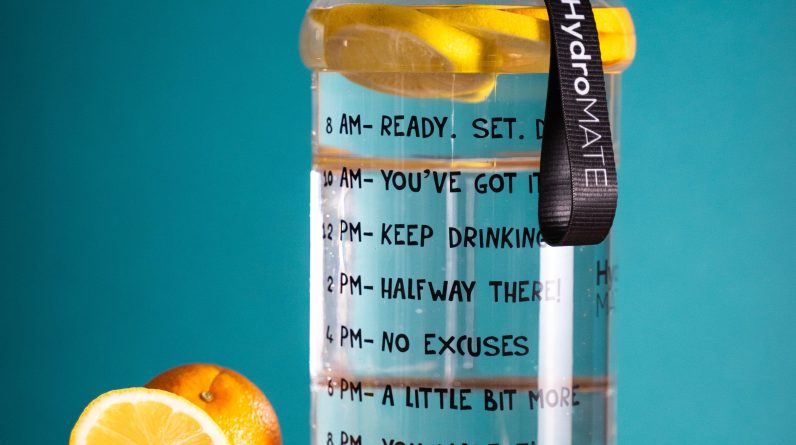
Emphasizing Iron and Calcium Intake for Girls Aged 9 to 18: Nurturing a Strong Foundation for Future Health
The period between 9 and 18 years of age is crucial for girls as it marks the transition from childhood to adolescence. During this stage, they undergo rapid physical and emotional changes that demand proper nutrition for healthy growth and development. Among the many essential nutrients, iron and calcium stand out as two vital elements that require particular emphasis for their well-being. In this article, we explore the importance of iron and calcium intake during these formative years and how parents, educators, and healthcare professionals can help foster healthier habits.
Understanding the Importance of Iron:
Iron plays a crucial role in the overall health and well-being of girls aged 9 to 18. During this developmental stage, the body’s demand for iron increases significantly due to rapid growth, the expansion of blood volume, and the onset of menstruation. Here are the key benefits of iron for girls during this period:
Preventing Iron Deficiency Anemia:
Iron is a vital component of hemoglobin, the protein in red blood cells responsible for carrying oxygen from the lungs to tissues throughout the body. Adequate iron intake helps prevent iron deficiency anemia, a condition where the body lacks sufficient healthy red blood cells, leading to fatigue, weakness, and reduced physical endurance.
Boosting Energy Levels:
Sufficient iron levels aid in proper oxygen transportation to cells and tissues, which contributes to higher energy levels and increased stamina. This is particularly important for active girls who participate in sports or physical activities.
Supporting Cognitive Function:
Iron plays a role in brain development and cognitive function. Ensuring an adequate supply of iron helps maintain mental alertness, concentration, and learning abilities during school years.
Strengthening Immune System:
Iron is involved in immune system function, helping the body fight off infections and diseases. Sufficient iron levels contribute to a robust immune response, helping girls stay healthier and recover faster from illnesses.
Promoting Healthy Growth and Development:
Iron is essential for the synthesis of proteins and enzymes necessary for growth and development. Adequate iron intake during adolescence supports the growth of organs, tissues, and bones, ensuring healthy development into adulthood.
Supporting Menstrual Health:
As girls reach puberty and start menstruating, their iron requirements increase due to blood loss during each menstrual cycle. Sufficient iron intake helps replenish the iron lost during menstruation, preventing iron deficiency and related health issues.
Enhancing Cognitive Performance:
Studies have shown that iron-deficient girls may experience cognitive impairments, such as difficulties in concentration, memory, and problem-solving. Sufficient iron intake can improve cognitive performance and academic achievements.
To enjoy these benefits, girls between 9 and 18 should consume iron-rich foods regularly and be mindful of factors that may inhibit iron absorption, such as consuming iron with vitamin C-rich foods and avoiding calcium-rich foods during iron-rich meals. As always, it is essential to consult with a healthcare professional for personalized advice on meeting individual iron needs.
A. Iron-Rich Foods:
Encourage girls to include iron-rich foods in their diet, such as lean meats, poultry, fish, legumes, fortified cereals, and dark leafy greens. Combining these foods with vitamin C-rich sources like citrus fruits or bell peppers enhances iron absorption.
B. Be Cautious of Iron Inhibitors:
Conversely, certain foods can hinder iron absorption, such as calcium-rich foods and beverages like milk, cheese, and yogurt when consumed simultaneously with iron-rich foods. Educate girls about this to maximize iron uptake from their meals.
The Importance of Calcium:
Bone Health:
Calcium is essential for building and maintaining strong bones during the critical growth period of adolescence, reducing the risk of osteoporosis later in life.
Muscle Function:
Adequate calcium intake helps in proper muscle contractions and supports overall muscle function, enabling girls to engage in physical activities effectively.
Nerve Transmission:
Calcium plays a vital role in nerve signal transmission, facilitating communication between nerves and ensuring smooth functioning of the nervous system.
Healthy Teeth:
Calcium contributes to the development of strong teeth and enamel, promoting dental health and preventing tooth decay.
Growth and Development:
Calcium is crucial for the overall growth and development of the body, supporting tissue formation and repair.
Blood Clotting:
Calcium is involved in the blood clotting process, ensuring wounds heal properly and preventing excessive bleeding.
Preventing Calcium Deficiency:
Consuming adequate calcium during adolescence helps prevent calcium deficiency-related issues like muscle cramps, weak bones, and increased risk of fractures.
A. Calcium-Rich Foods:
Promote a calcium-rich diet by incorporating dairy products like milk, yogurt, and cheese. Additionally, fortified non-dairy alternatives, leafy greens, nuts, and seeds are excellent sources of calcium.
B. Enhance Vitamin D Intake:
Vitamin D facilitates calcium absorption. Encourage outdoor activities and sensible sun exposure to aid in the body’s production of vitamin D. Fortified foods and supplements can also be beneficial, especially in areas with limited sunlight.
25 foods high in calcium
| 25 foods high in calcium | ||
| Produce | Serving size | Estimated calcium in milligrams |
| Collard greens, frozen | 8 oz | 360 |
| Broccoli rabe | 8 oz | 200 |
| Kale, frozen | 8 oz | 180 |
| Soy Beans, green, boiled | 8 oz | 175 |
| Bok Choy, cooked, boiled | 8 oz | 160 |
| Figs, dried | 2 figs | 65 |
| Broccoli, fresh, cooked | 8 oz | 60 |
| Oranges | 1 whole | 55 |
| Seafood | Serving size | Estimated calcium |
| Sardines, canned with bones | 3 oz | 325 |
| Salmon, canned with bones | 3 oz | 180 |
| Shrimp, canned | 3 oz | 125 |
| Dairy | Serving size | Estimated calcium |
| Ricotta, part-skim | 4 oz | 335 |
| Yogurt, plain, low-fat | 6 oz | 310 |
| Milk, skim, low-fat, whole | 8 oz | 300 |
| Yogurt with fruit, low-fat | 6 oz | 260 |
| Mozzarella, part-skim | 1 oz | 210 |
| Cheddar | 1 oz | 205 |
| Greek yogurt | 6 oz | 200 |
| American cheese | 1 oz | 195 |
| Feta cheese | 4 oz | 140 |
| Cottage cheese | 4 oz | 125 |
| Fortified food | Serving Size | Estimated calcium |
| Almond milk, rice milk or soy milk, fortified | 8 oz | 300 |
| Tofu, prepared with calcium | 4 oz | 205 |
| Orange juice fortified with calcium | 4 oz | 150 |
| Cereal, fortified | 8 oz | 100-1,000 |
Instilling Healthy Habits:
Role Modeling:
Parents and caregivers can serve as role models by adopting balanced diets themselves, emphasizing the importance of iron and calcium-rich foods.
Education:
Schools can include nutrition education in their curriculum, teaching girls about the significance of iron and calcium for their health and well-being.
Regular Check-ups:
Routine health check-ups can help monitor girls’ nutrient levels and identify any deficiencies or health issues early on.
So how much calcium do you really need?
The recommended daily intake of calcium varies depending on age, sex, and certain life stages. Here are the general guidelines for daily calcium intake:
Infants:
- 0 to 6 months: 200 mg
- 7 to 12 months: 260 mg
Children and Adolescents:
- 1 to 3 years: 700 mg
- 4 to 8 years: 1,000 mg
- 9 to 18 years: 1,300 mg
Adults:
- Men 19 to 50 years: 1,000 mg
- Women 19 to 50 years: 1,000 mg
- Men 51 to 70 years: 1,000 mg
- Women 51 to 70 years: 1,200 mg
- Men and Women 71 years and older: 1,200 mg
Pregnant and Breastfeeding Women:
- Pregnant and lactating women under 18 years: 1,300 mg
- Pregnant and lactating women 19 years and older: 1,000 mg
It’s important to note that these are general recommendations and may vary based on individual health conditions or specific needs. For instance, individuals with certain medical conditions, such as osteoporosis or malabsorption issues, may require higher calcium intake under the guidance of a healthcare professional.
Furthermore, it’s essential to consider dietary sources of calcium rather than solely relying on supplements. Good sources of dietary calcium include dairy products like milk, yogurt, and cheese, as well as fortified plant-based milk alternatives. Leafy green vegetables, tofu, nuts, and seeds are also sources of calcium. Additionally, vitamin D plays a critical role in calcium absorption, so it’s essential to ensure adequate vitamin D levels through sunlight exposure or supplementation if necessary.
During the critical years of 9 to 18, girls’ bodies undergo rapid changes and require proper nourishment to support their growth and development. Emphasizing the intake of iron and calcium-rich foods is crucial to ensuring they build a strong foundation for future health. By fostering healthy eating habits and providing adequate nutritional support, we can empower girls to reach their full potential and lead healthy, fulfilling lives.






